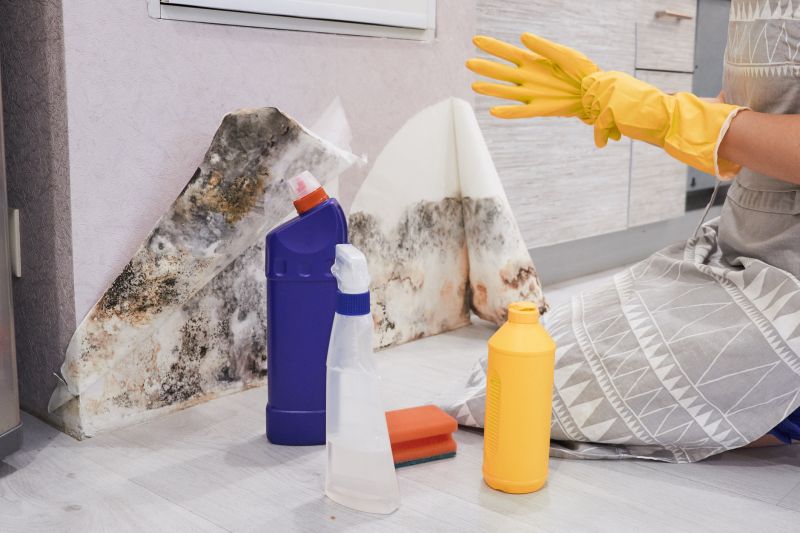Top Solutions For Black Mold Abatement That Deliver Results
Get access to powerful products engineered to effectively eliminate black mold and improve indoor air quality.
 Black mold can pose health concerns and may cause property damage if not addressed properly. When tackling mold issues, selecting the right products is essential for effective and safe remediation. Various types of products are available to help eliminate mold and prevent its recurrence, ranging from chemical solutions to physical removal tools. Proper application and adherence to safety guidelines are crucial to ensure that mold is effectively managed without causing additional issues.
Black mold can pose health concerns and may cause property damage if not addressed properly. When tackling mold issues, selecting the right products is essential for effective and safe remediation. Various types of products are available to help eliminate mold and prevent its recurrence, ranging from chemical solutions to physical removal tools. Proper application and adherence to safety guidelines are crucial to ensure that mold is effectively managed without causing additional issues.
Top Overall Option
Multipurpose Mold and Mildew Cleaner
A versatile cleaning solution designed for use on various surfaces, this product offers effective fungicidal properties to help clean and inhibit mold growth. It is suitable for use in bathrooms, basements, and other areas prone to moisture. Proper application and safety precautions should be followed for optimal results.
Types of Products For Black Mold Abatements
Fungicidal Spray
Sprays formulated to kill mold spores on contact, suitable for use on non-porous surfaces.
Mold Removal Gel
Thick gel formulations that cling to surfaces, ideal for targeted mold removal in hard-to-reach areas.
Antimicrobial Surface Wipes
Convenient wipes to disinfect and clean surfaces contaminated with mold.
HEPA Vacuum with HEPA Filter
Vacuum designed to trap mold spores and prevent their spread during cleaning.
Mold-Resistant Paint
Specialized paint containing antimicrobial agents to inhibit mold growth on painted surfaces.
Absorbent Mold Control Mats
Mats that absorb excess moisture in problem areas to reduce mold growth potential.
Dehumidifiers
Devices that reduce indoor humidity levels, making environments less conducive to mold growth.
Moisture Meters
Tools to detect moisture levels in walls, floors, and ceilings to identify hidden mold sources.
Mold-Resistant Drywall
Special drywall designed to resist mold growth in high-moisture areas.
Biological Mold Cleaners
Natural or enzymatic solutions aimed at breaking down mold without harsh chemicals.
Air Purifiers with HEPA Filters
Devices that improve indoor air quality by removing airborne mold spores.
Mold Inhibitor Sprays
Sprays designed to be applied after cleaning to prevent mold from returning.
Sealants for Porous Surfaces
Sealants that can be applied to porous materials to block mold infiltration.
Steam Cleaners
High-temperature steam devices effective for deep cleaning mold from various surfaces.
Popular Choices
Effective on a variety of surfaces, suitable for routine cleaning and mold prevention.
Designed for severe mold infestations, suitable for stubborn growths on durable surfaces.
Commonly used for bathroom and basement cleaning to address mold and mildew issues.
Ideal for cleaning mold spores from carpets, upholstery, and hard surfaces.
Used as a base coat to inhibit mold growth on walls and ceilings.
Cloth or packet-based products that help reduce humidity in small spaces.
Widely used in basements and crawl spaces to control humidity levels.
Tools that help locate hidden moisture behind walls and floors.
Popular for new construction or renovation in moisture-prone areas.
Eco-friendly options that utilize enzymes to break down mold spores.
Devices that help improve indoor air quality by removing airborne mold particles and odors.
Applied after cleaning to help prevent mold regrowth on various surfaces.
Used to protect materials like wood and drywall from mold infiltration.
Popular for deep cleaning and sanitizing mold-affected areas without chemicals.
Effective mold abatement often involves cleaning surfaces with specialized solutions that can penetrate porous materials and inhibit mold growth. These products typically contain fungicidal agents designed to kill mold spores and prevent future growth. Alongside chemical treatments, physical removal tools such as scrapers, brushes, and HEPA vacuums can assist in thoroughly cleaning affected areas. It is also important to address underlying moisture issues to prevent mold from returning.
When choosing products for black mold abatement, consider the severity of the mold problem, the type of surface involved, and the potential health risks. Proper personal protective equipment, including masks, gloves, and eye protection, should always be used during remediation. Additionally, selecting products that are suitable for different surfaces—such as drywall, wood, or tile—can ensure more effective and safe cleaning. Regular maintenance and moisture control are key components of a comprehensive mold management strategy.
Key Buying Considerations
- Identify the extent and severity of mold growth to select appropriate products.
- Determine the surface type involved to choose compatible cleaning solutions.
- Always use personal protective equipment such as masks, gloves, and goggles during application.
- Check product labels for safety instructions and recommended usage guidelines.
- Opt for products with fungicidal or antimicrobial properties for effective mold control.
- Consider tools that can reach difficult areas, such as brushes or extendable poles.
- Use moisture meters to identify hidden sources of dampness that contribute to mold growth.
- Incorporate moisture control devices like dehumidifiers to reduce humidity levels.
- Address underlying issues such as leaks or poor ventilation to prevent mold recurrence.
- Select products suitable for the specific environment, such as bathrooms or basements.
- Review product compatibility with surfaces like drywall, wood, tile, or fabric.
- Ensure proper disposal of contaminated materials following safety guidelines.
- Combine chemical treatments with physical removal for comprehensive mold abatement.
- Consider long-term prevention strategies, including mold-resistant paints and sealants.
- Evaluate the ease of application and cleaning when choosing products for regular maintenance.
